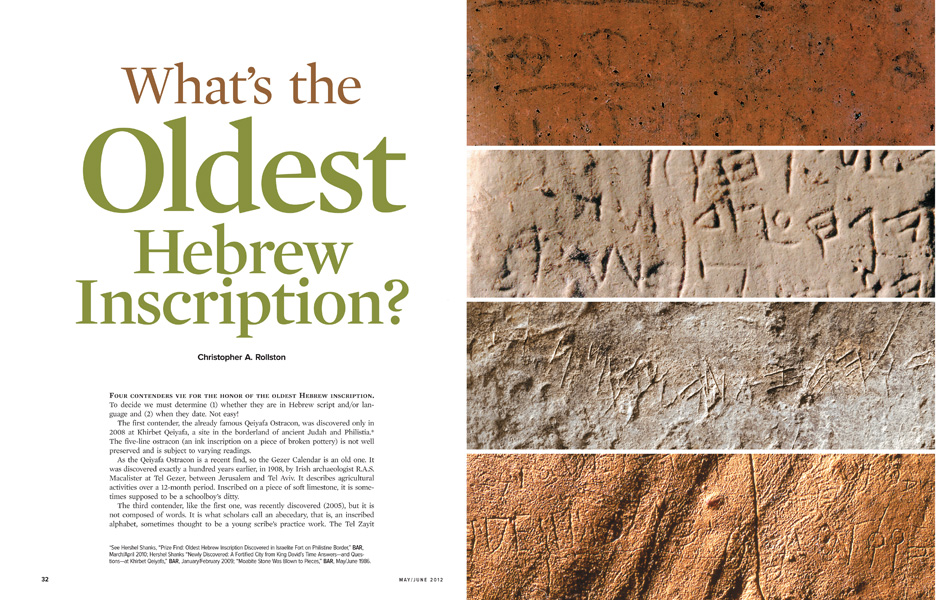Another View: Christopher Rollston’s Methodology of Caution

In “What’s the Oldest Hebrew Inscription?” (BAR 38:03), Christopher Rollston discusses four different early inscriptions: the Khirbet Qeiyafa Ostracon, the Gezer Calendar, the Tel Zayit Abecedary and the Izbet Zartah Abecedary. He argues that none of them can be identified as Hebrew. However, Rollston does not suggest any alternative identification. Are these inscriptions Canaanite? Phoenician? Moabite? If they are written in Canaanite, did Canaanite people build the Iron Age cities of Israel and Judah in the tenth and ninth centuries B.C.E.? If these inscriptions are Phoenician or Moabite, are there any indications of migrations of people from Lebanon or Transjordan to southern Israel during the Iron Age? At the end of the day, according to Rollston, we have inscriptions without a people and people without a language.
Rollston raises these other possibilities as a matter of “caution.” He subscribes to a methodology of caution. Let me give other examples of his methodology of caution:
Already a library member? Log in here.
Institution user? Log in with your IP address.

